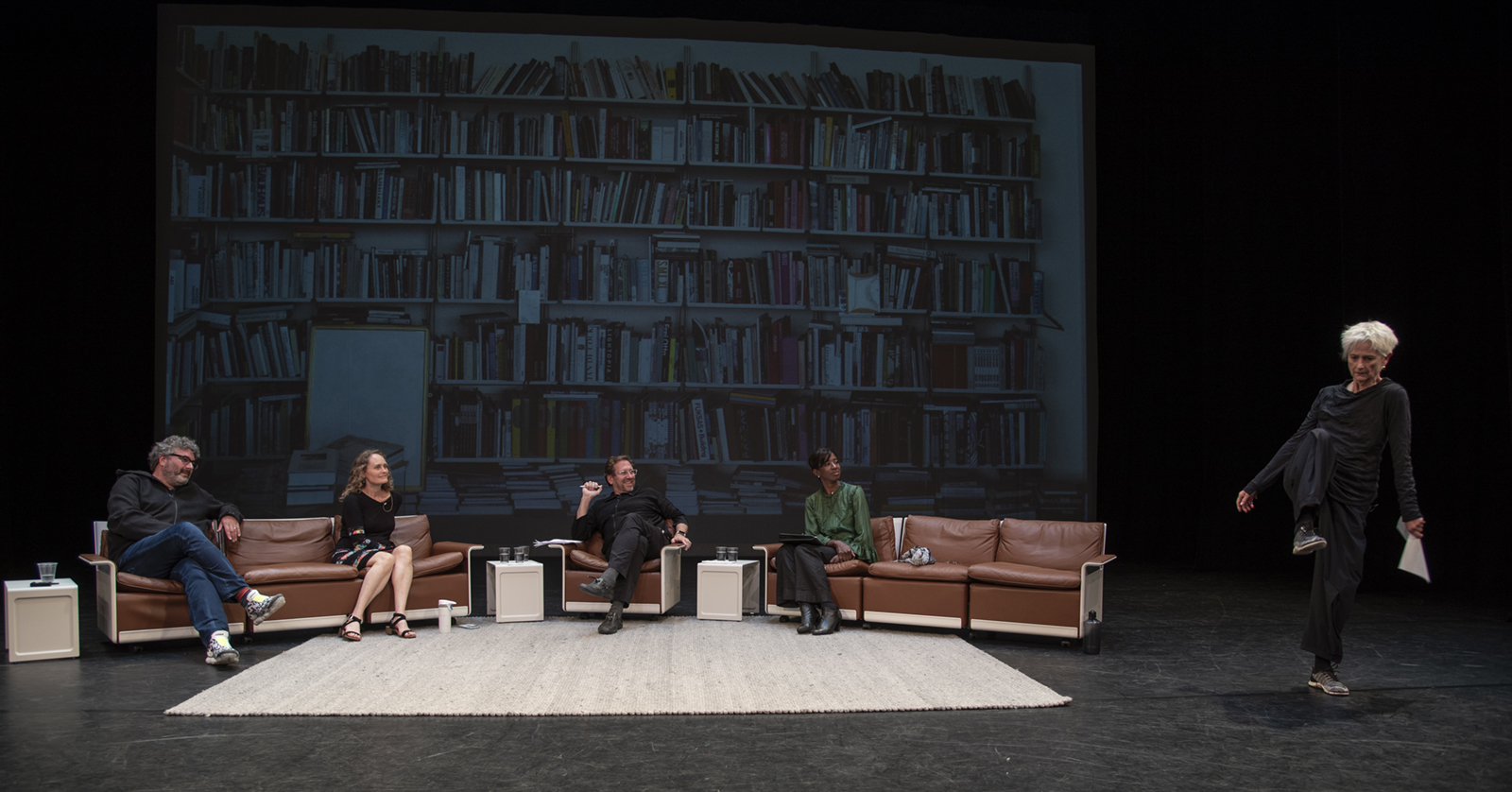’10 Questions’ showcases multidisciplinary inquiry into ‘What is a body?’

At a “10 Questions” panel Tuesday, Susan Foster, a dance professor, performed a choreographed lecture to explore the everyday physical realities and limits of the body and its interaction with our expectations of it. (Photo courtesy of Hannah Burnett/UCLA:Arts)
By Nidhi Upadhyay
Nov. 8, 2018 11:34 p.m.
The “10 Questions” lecture series, which will address a different question each week, doubles as a course for students and a panel open to the public. The series will explore open-ended questions such as “What is beauty?”, “What is failure?” and “What is knowledge?”
Each week’s panel will feature two faculty members from the School of the Arts and Architecture and two faculty members from other departments who will approach the question of the week from the perspective of their academic disciplines.
An architect demonstrated how technology can help people overcome their bodies’ physical constraints when he showed a video of a robot “pet” he programmed to follow its owner around carrying bags.
Four professors discussed changing notions of what constitutes a body within the fields of biology, environmental engineering, architecture and dance at the “10 Questions” lecture Tuesday night.
Tracy Johnson, professor of molecular, cell, and developmental biology, discussed how established ideas of the body’s structure are changing in molecular biology because of new research in epigenetics and the human microbiome.
“We are only about 10 to 30 percent human,” Johnson said. “Seventy to 90 percent of the cells in our body are microbes. … It’s clear that there’s a major contribution in this vessel that we inhabit of nonhuman forms.”
She said traditional biological models of the body that reduce it to its basic genetic components are insufficient and that people should also take a more holistic view, accounting for bacteria and environmental factors.
“(Without considering the) synergistic activities of all of the organisms that are a part of that relationship, as well as the environment, we’re never going to really understand how the physical body functions,” she said.
Jennifer Jay, a civil and environmental engineering professor, used food as a framework to connect individual human bodies to the earth and its environment, which Jay referred to as a system or body.
She compared water and carbon footprints of different foods to show how decisions about what we put in our bodies have direct consequences on the health of the world’s ecosystems.
Focusing on technological rather than environmental extensions of the body, Greg Lynn, a professor in the department of architecture and urban design, listed nine “body problems,” case studies that show technological solutions to limits and performance deficiencies of the human body.
Emphasizing the individual’s body and senses, Susan Foster, a dance professor, performed a choreographed routine while lecturing. She talked about how the physical realities and limits of the body interact with our expectations of it.
“The body is a set of metaphors,” Foster said. “Over the years, I have experienced the body as an instrument, a vehicle, a potential, an exasperation, a pain and a wonder.”
Tameri Bushra, a fifth-year art student, said the variety of speakers appealed to her different academic interests as an art student who is also a premedical student.
“It was really interesting to compare … views of the body from a biological perspective and also from an aesthetic and kinesthetic perspective,” Bushra said.
Francine Banda, a second-year art student, said the lecture made her consider how identity intersects with the body from a biological perspective.
“I was really fascinated by the idea of our bodies as … only being 10 percent human,” Banda said. “I thought a lot about the organisms that are in our bodies that are independent but rely on our body as the environment to sustain themselves.”
Banda said she liked how Johnson’s presentation raised evocative questions about the fluidity of identity.
“It also made me think about antibiotics – I took antibiotics this year a couple of times and I noticed a really significant change in my mood and even my concentration,” Banda said. “The microbiome in your body can permanently alter your sense of self or how you are able to function.”
Bushra said she found Lynn’s presentation about technology and artificial intelligence gave her a fresh perspective. Bushra added this made her consider how such technological enhancements to the body could be used to solve everyday problems.
“It was surprising to me that he talked about robots and artificial intelligence in terms of companions, almost as supplements to our own bodies rather than like a replacement,” Bushra said. “For people with disabilities, or people with reduced mobility, I think it could be really productive.”


